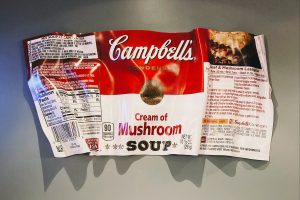 You’ll hear a lot of claims when you listen to commercials or look at the front of the food package, but the real truth comes from reading the part of food labels where the nutritional information is. Knowing serving size and calories per serving can make a huge difference if you’re trying to lose weight. Checking the food label can tell you how much sugar was added to the product. It informs you on the amount of sodium, fat, total carbohydrates, and cholesterol to guide you to make the healthiest choices.
You’ll hear a lot of claims when you listen to commercials or look at the front of the food package, but the real truth comes from reading the part of food labels where the nutritional information is. Knowing serving size and calories per serving can make a huge difference if you’re trying to lose weight. Checking the food label can tell you how much sugar was added to the product. It informs you on the amount of sodium, fat, total carbohydrates, and cholesterol to guide you to make the healthiest choices.
The label also contains ingredients.
Eating whole foods is always best. It’s closer to its natural state without a lot of additives. If you check a food label and it reads like a science experiment, put the food back on the shelf. If you don’t know what the ingredient name means, it’s a signal that it may be a chemical additive. Peanut butter, for example, should contain only peanuts and maybe salt. You can find the information in two places, the ingredient list and the nutritional information where they identify added sugar.
The percentage of daily nutritional values based on a 2000-calorie diet is on the label in two spots.
The label shows the daily value of macronutrients and sodium at the top, and below it, there’s a chart for the other nutrients it contains. It’s a percentage of the nutrient you need or the amount not to exceed each day. For instance, the percentage for sodium is the amount not to exceed, while the percentage for vitamin A is the amount you need. When you check food labels, you can compare similar products and choose the healthiest.
You’ll learn the serving size and whether health food is really healthy.
Check out cookies or chips. They don’t appear to contain that many calories until you notice the serving size. The serving size may be so small it would only suit a toddler. Some foods you thought were healthy will show their true colors when you read the food label. They often are high in sugar and fat with few nutrients. It can open your eyes and help you find the best workout snack that puts more power into your efforts.
- If you’re counting carbs or calories, the food label helps you by showing both per serving. Some labels will surprise you with the amount of added sugar they contain.
- You’ll be newly impressed with some of the canned vegetables. Most have nothing or just salt added and contain almost as much nutrition as fresh alternatives but at a lower price.
- Before the last mandated change to food labels, manufacturers used several types of sugar to make each type further down on the list and mask the amount of sugar the food contained.
- Manufacturers are required to show the amount of vitamin D, iron, calcium, and potassium. If they choose, they can show the vitamin A and C content.
For more information, contact us today at LIV Fitness
